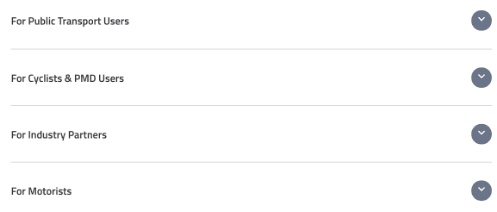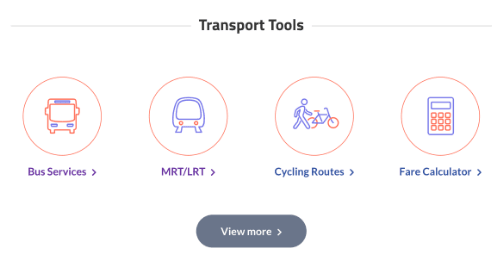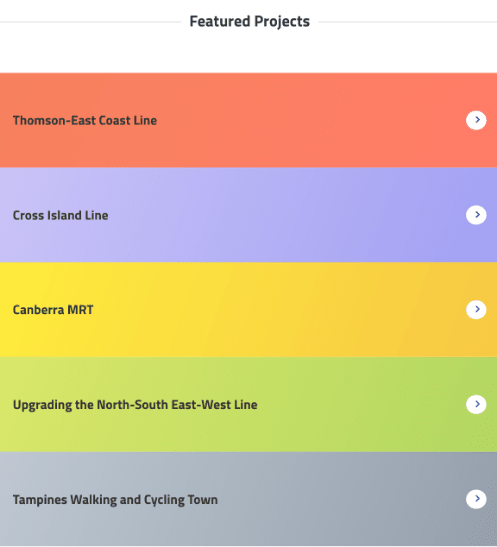Since 2016, the Land Transport Authority (LTA) has been publishing reports on rail reliability to keep the public informed of the performance of our MRT network and how it has improved over time.
2. On 22 Sep 2025, Acting Minister for Transport Mr Jeffrey Siow announced in Parliament that more data on rail reliability would be made publicly available, so that interested commuters can have a fuller picture of our reliability performance. Going forward, LTA will publish monthly updates on rail reliability data, instead of on a quarterly basis. This revised monthly cadence is part of our ongoing efforts to improve transparency and accountability, and to provide the public with a clearer picture of how our rail network has been performing over time.
Update on Mean Kilometres Between Failure
3. In 2017, then-Minister for Transport Mr Khaw Boon Wan set the Mean Kilometres Between Failure (MKBF) target of 1 million train-km for the MRT network. We achieved this target in 2019, and have remained above it ever since. Today, the 1 million MKBF target remains a relevant and meaningful indicator, allowing us to benchmark ourselves against other top-of-class operators around the world.
4. As at end-August 2025, the 12-month moving average MKBF for the MRT network was 1,740,000 train-km, a drop from the 1,818,000 train-km as of end-July 2025, but an improvement from the 1,598,000 train-km as of end-June 2025. Both the North-South Line and Circle Line saw increases in their MKBF since end-July 2025, from 1,413,000 train-km to 1,648,000 train-km, and 1,067,000 train-km to 1,245,000 train-km respectively. The Downtown Line and North East Line saw their MKBF fall from 4,131,000 train-km to 2,760,000 train-km, and from 4,262,000 to 2,142,000 train-km respectively – these were due to one delay on each line in Aug 2025, reflecting the sensitivity of MKBF to small variations in the number of delays above 1 million train-km. LTA will continue to provide monthly updates on the MKBF for the overall MRT network as well as for individual rail lines.
5. In addition, similar to other MRT lines, we will also start publishing the MKBF performance and number of delays lasting >30 mins for the Thomson-East Coast Line (TEL) from this edition of the report onwards.
a. While MKBF provides a reasonable indicator for reliability of mature rail lines, its limitations can make it less reflective of the reliability of a newer line. A newer rail line in its early stages tends to operate significantly lower mileage, as the overall line is shorter, and given relatively lower ridership, trains are not being operated at more typical frequencies. In addition, the operation of new lines, especially lines that are still undergoing construction and extension, will take time to stabilise.
b. Since the start of the phased opening of the TEL, LTA and the operator have been working with the Original Equipment Manufacturers (OEM) to resolve teething issues. As with all new lines, the TEL is currently in its initial engineering “bathtub” stage — a period when teething issues are expected as the system stabilises and matures. For example, this includes issues with the new signalling system of the TEL, which LTA and the operator have been working with the OEM to address. Issues that arise in the initial stages of operations and after system updates as part of ongoing works may result in delays. Such issues differ from the faults encountered in the operation of more mature rail lines.
c. Nevertheless, given that the TEL (up to TEL Stage 4) has so far accumulated one year of more representative data, LTA will commence reporting the TEL’s MKBF separately.
d. The TEL project is not fully complete, as works on TEL Stage 5 are still underway by LTA, the operator and OEMs. More time is needed before the TEL’s performance stabilises.
e. We expect the performance of the TEL to improve after it fully opens in 2026 and its operations have stabilised, such that its fault trends can be fairly compared with our other mature lines.
Other reliability measures
6. As mentioned by the Acting Minister for Transport, LTA also tracks other indicators of rail reliability besides MKBF. While MKBF remains a simple and internationally recognised indicator of rail reliability, one limitation is that it does not reflect the length of each disruption, and hence the actual impact on our commuters. To complement this, LTA has been publishing the number of delays lasting more than 30 minutes in the rail reliability report, to reflect the frequency of more severe disruptions. LTA will also provide monthly updates on this figure going forward.
7. LTA will also look into sharing more indicators publicly, such as the proportion of scheduled mileage travelled by revenue trains, as well as the punctuality of trains reaching each terminus station. Such indicators would allow us to provide more international comparisons with other major overseas metros that publish similar indicators but not MKBF. We are also studying further additional metrics that better reflect the impact of rail disruptions on commuters. Preliminarily, this could include the number of commuter trips affected by rail disruptions, taking into account the extent and duration of disruptions. These new indicators will be included in the next rail reliability report.
Rail Reliability Taskforce
8. Closer tracking of rail reliability outcomes will improve our ability to make targeted improvements to rail maintenance, operations and incident response, to best minimise the impact of rail disruptions on commuters. This complements the work of the Rail Reliability Taskforce.
9. Earlier, the Rail Reliability Taskforce also appointed a five-member Independent Advisory Panel (IAP) to provide strategic guidance, technical expertise and insights to support the Taskforce’s efforts in enhancing Singapore's rail network reliability. Additionally, the Government has set aside an additional $1 billion over the next five years to further strengthen our rail capabilities, scale up technology adoption and support skills upgrading for our workers.
10. We seek the understanding and patience of commuters as we work as #OneTransportTeam to further improve the reliability of our rail system.
Performance of Rail Service Reliability
















